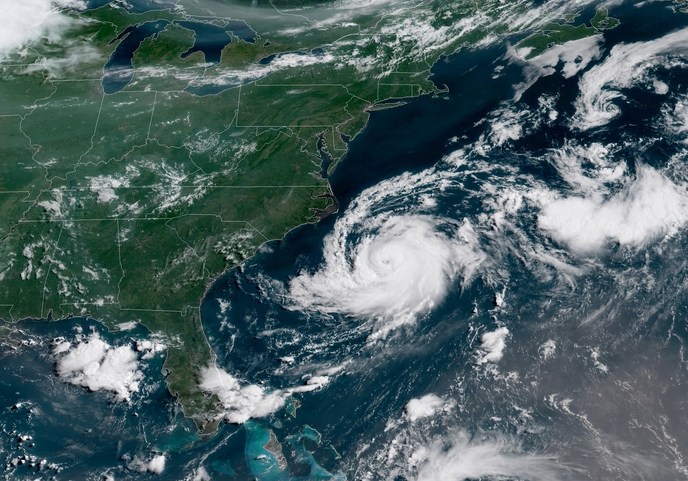Tropical storm Chris, a compact system that came together off the Carolinas, was expected to gain hurricane strength Tuesday and set off on a northeastward course away from the East Coast.
At 5 a.m. Eastern time, Chris was centered about 200 miles south-southeast of Cape Hatteras, N.C., with maximum sustained winds of 60 mph and gusts to 75 mph, according to the National Hurricane Center in Miami.
Movement was northeast at 2 mph, with a central pressure of 993 millibars or 29.33” of mercury.
Forecasters expected the storm to gain category one hurricane strength later Tuesday, and accelerate its northeast movement along a mid-latitude low dropping over eastern Canada and the northeastern U.S. A brief run of about 48 hours as a hurricane, with sustained winds peaking around 80 knots at midday Thursday, will likely end as Chris passes beyond the Gulf Stream into cooler waters, according to the hurricane center.
The center’s track forecast has the storm passing well off Nova Scotia, and then transitioning to an extratropical low as it passes near or over southeastern Newfoundland at the end of the week.





